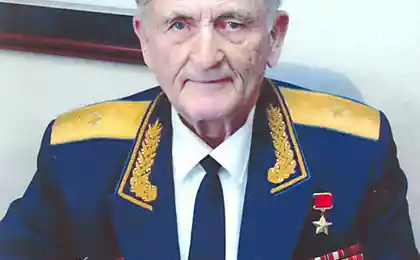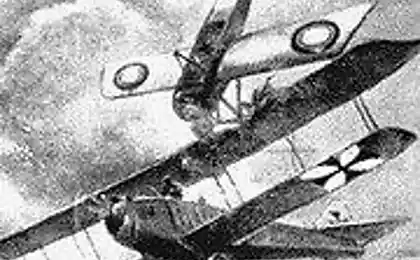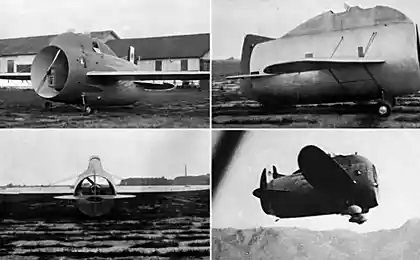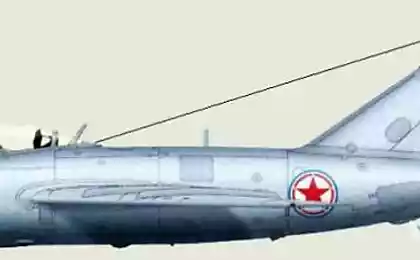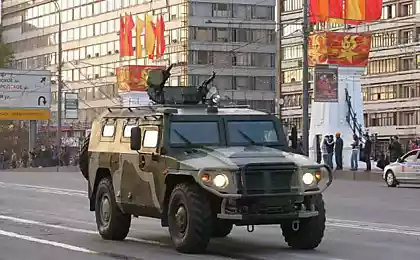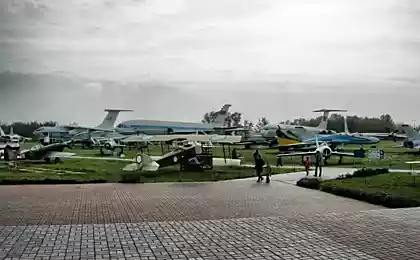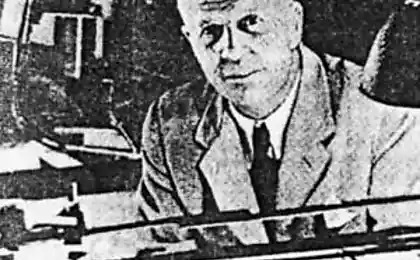1330
8 best bombers in aviation history
Continue aviation theme that began with these posts
The top 10 production aircraft from Sukhoi
10 iconic in the history of military helicopters
Today I want to tell you about the 8 best bombers in aviation history of the USSR and Russia.
Russia became the birthplace of aircraft bombers because of the designer Igor Sikorsky, who in 1913 created the first aircraft of this type. In the Soviet Union it was also created, and the most massive in the world of the bomber. A January 20, 1953 its first flight made its first intercontinental jet bomber M-4 created VM Myasishev. Today review of aircraft-bombers, created by Russian designers.
Will be 24 photos + text source.
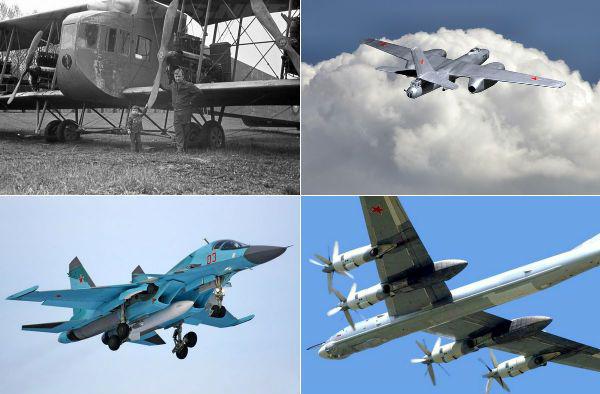
Ilya Muromets - the world's first bomber
The world's first bomber was founded in Russia in 1914, Igor Sikorsky and was named in honor of the epic hero. "Ilya Muromets" - the so-called various modifications of the aircraft, which were produced in Russia from 1913 to 1918. The main parts of the aircraft were made of wood. The lower and upper wings are assembled from separate parts and joined by connectors. Wingspan first bomber was 32 meters. Because in those years in the Russian aircraft engines are not made, then on the "Ilya Muromets" were installed motors «Argus» German production. Domestic motor P BV3 bomber set in 1915.
The bomber Ilya Muromets (1913). Photo: wright-brothers.org
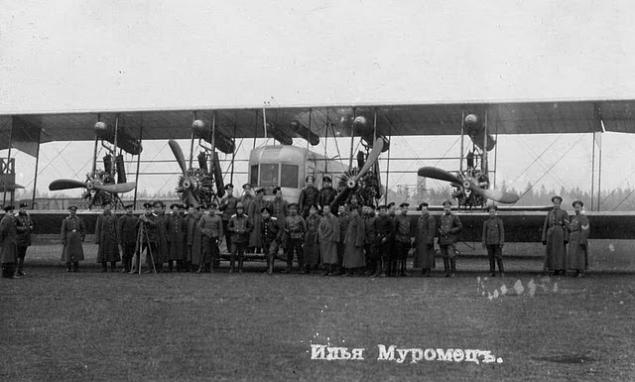
"Ilya Muromets" was a 4-engine, and even stop the two engines could not get the plane to sit down. During the flight of an airplane wing people could walk, and it did not affect the balance of the aircraft. The yield on the wing during the test itself Sikorsky aircraft made to ensure that, if necessary, the pilot can repair the engine in the air.
The bomber Ilya Muromets created by designer Sikorski. Photo: dartzkombat.com
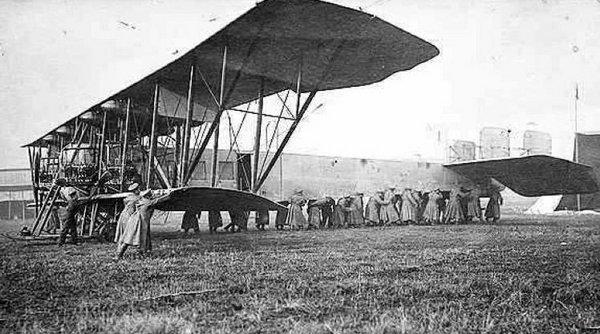
At the end of December 1914 Emperor Nicholas II approved a decree on the establishment of the Military Council "Squadron airships", which became the world's first connection bombers. For the first combat mission the aircraft of the Russian squadron flew on February 27, 1915. The first flight proved inconclusive because pilots got lost and could not find the target. The next day, the job was completed successfully: pilots dropped 5 bombs on the railway station, and dropped a bomb right in the middle of the rolling stock. Result flying bombers managed to capture on a photo. Besides bombs armed bomber "Ilya Muromets" was installed a machine gun? rapid-gun ship "Hotchkiss" caliber 37 mm. It attaches to the front of the site of artillery and was intended to combat the "Zeppelin". The bombs were placed inside the plane (vertically along the boards) and on the external sling. By 1916, aircraft bomb load increased to 500 kg, and to reset the bomb was constructed elektrosbrasyvatel
Cab bomber Ilya Muromets. Photo: ic.pics.livejournal.com
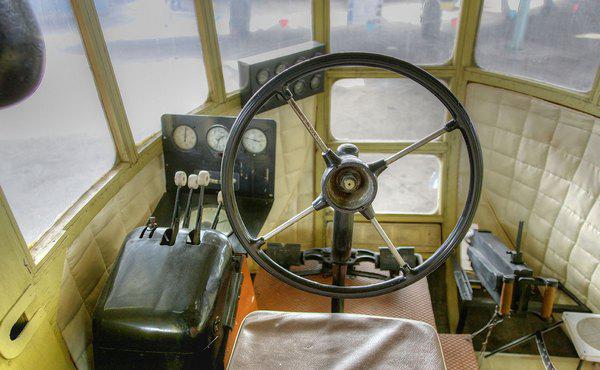
In total, during the First World Russian bombers flew 400 sorties, dropping 65 tons of bombs and destroying 12 enemy fighters. Military losses amounted to only one plane (which to attack 20 planes).
Ilya Muromets in the air. Photo: firetrench.com
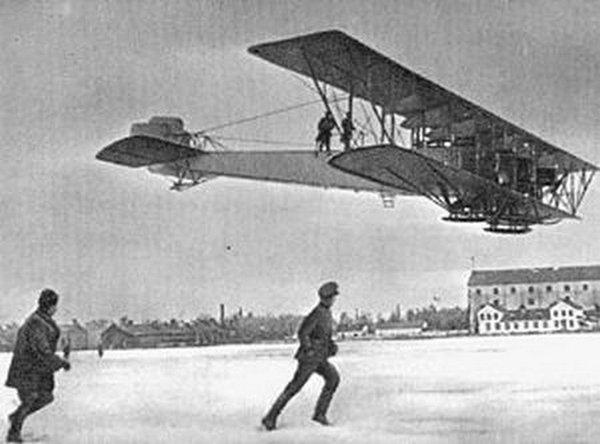
TB-1 - the world's first heavy bomber
In the early 1920s among the Soviet samolёtostroiteley discussion focused on how to build something from the aircraft. Most of the opinion that the Soviet aircraft should be wood, then there were those who insisted that the Soviet Union should create all-metal aircraft. Among the latter was a young engineer Andrei Tupolev, who was able to insist on his own opinion.
Heavy bombers TB-1. Photo: wwiivehicles.com
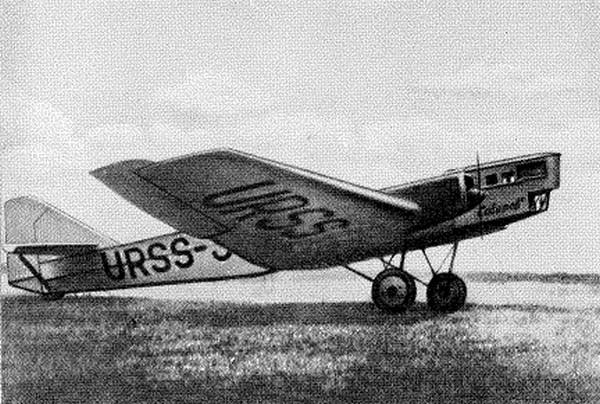
TB-1, which, after much testing and development in 1931 still came down the assembly line, became the first domestic bomber-monoplane, the first Russian all-metal bomber and the first Soviet bomber designs will go into series production. It is with the TB-1 in the Soviet Union began the formation of strategic aviation. These machines scoured the sky for more than two decades.
It is on the TB-1 was tested many innovations that were later used in the aviation industry, in particular the system of "autopilot" radio system, ejection system, and so on. The plane could carry 1030 kg bomb load and small arms (three twin installation). The crew of the aircraft - 5-6 people.
TB-1 and its modifications has been established several world aviarekordov. So, on this bomber August 23, 1929 was committed first ever flight by plane from the Soviet Union to the United States. In 1934, TB-1 pilot AV Liapidevskii Chelyuskinites saved and brought out of the camp for all women and children. The bombers TB-1 consisted in service in the Soviet Union until 1936, and some - before the Great Otechestvennoy.Vsego was built 212 aircraft of this type.
Bomber TB-1 - winged pride of Russia. Photo: yakutskhistory.net

Pe-2 - the most massive bomber
In 1938 the famous Tupolev Design Bureau began development of a dive bomber Pe-2, which later became the most massive Soviet bombers during World War II.
Pe-2 was a very compact all-metal construction and had a good aerodynamic shape. On the bomber was established 2 motor M-105R Liquid Cooling 1,100 hp, which allow the aircraft to reach speeds up to 452 km \ h (only at 30 km / h less than the fighter Me 109E-standing armed with the fascist army ).
Pe-2 in the sky. Photo: photobucket.com

In 1940 he was released two serial bomber, and in early 1941, has descended from the conveyor 258 Pe-2 bombers. May 1, 1941 the new bomber, who was the 95th Regiment Colonel Pestova, flying during the parade on Red Square. Pe-2 took part in the fighting in the very first days of the war. By 1943, the bombers Pe-2 ranks first in the number of bombers. Due to the high precision bombing, they were a very effective weapon. Known fact that the pilots of the 3rd Air Corps bomber July 16, 1943 on its 115 aircraft destroyed 229 vehicles, 55 tanks, 12 machine-gun and mortar outlets, 11 anti-aircraft guns and field 3, 7, fuel depots and ammunition.
Legendary Soviet bomber Pe-2. Photo: airliners.net
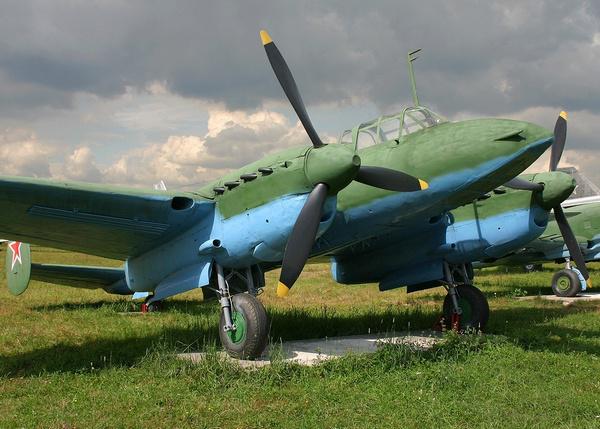
And although in 1944 began to come to the front of the Tu-2, which are the main parameters exceeded the Pe-2 "pawn" to end the war remained a major Soviet bombers and at the "maize" became a legend of Soviet aviation.
The cabin Pe-2. Photo: englishrussia.com
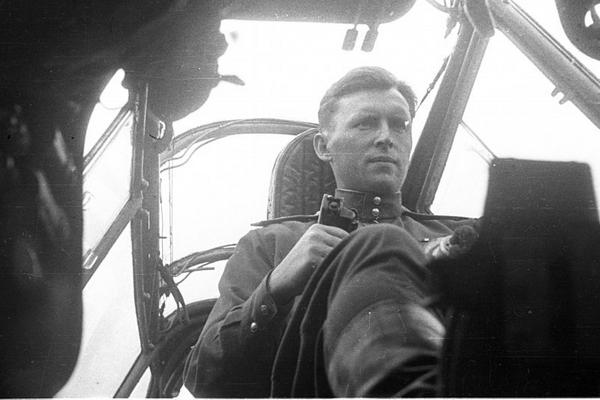
Tu-4 - the first Soviet strategic bomber
At the beginning of 1945 at the Far Eastern Soviet airfields happened to be 4 American aircraft the B-29 that participated in the bombardment of Japan and the occupied territories. When the Communist Party and the Soviet government gave the designers the task of creating a modern long-range bomber, a professor at the Moscow Aviation Institute and the aircraft Vladimir Myasischev offered to copy the American bombers, but to establish a new aircraft Russian engine AL-72 and US machine guns replaced by guns B-20.
Tu-4 - the first Soviet strategic bomber. Photo: wordpress.com

Tu-4, flight tests which were held in 1947 - an all-metal cantilever monoplane. The length of the bomber was 30, 8 meters, wingspan - 43, 05 meters. Four motor AL-73TK capacity of 2400 liters. from. allowed the aircraft to accelerate to 558 km / h at an altitude of 10 km. The maximum bomb load - 8 tons. The efficiency of the aircraft has improved through the use of automation. For example, the onboard radar with autopilot allowed to find the target and hit them even at night.
Tu-4 clone of a B-29 Photo: livejournal.com

Tu-4 became the first Soviet nuclear weapons carrier when in 1951 the USSR was formed bomber regiment, armed with atomic bombs. In 1956, during the Hungarian uprising made a regiment of departure in the bombing of Budapest, which at the last moment was interrupted by order of the Soviet command.
There were built 847 aircraft, 25 of which have transferred to China.
The cabin Tu-4. Photo: news.xinhuanet.com
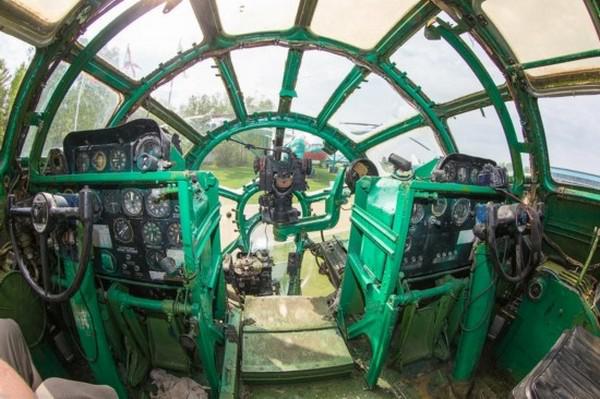
M-4 BISON - strategic intercontinental jet bomber
In the late 1940s, with the advent of nuclear weapons it has become necessary in the means of delivery. Bombers were needed that surpasses the existing technical characteristics of the approximately 2-fold. The first to develop the concept of the aircraft started the Americans. So there were the B-60 and B-52, which took off in the spring of 1953. In the USSR work on a bomber of this class were developed with a significant delay. Stalin ordered the development of the aircraft professor of Moscow Aviation Institute V.Myasischevu who filed into the government science-based proposal for the establishment of strategic aircraft with a range of 11,000 - 12,000 km, but the deadlines were very tight deadlines of the project. By December 1952 prototype aircraft was built, and in January 1953, M-4 bomber - eight-cantilever-metal midwing equipped with 4 engines and retractable landing gear bicycle type - made its first flight.
M-4 BISON - strategic intercontinental jet bomber
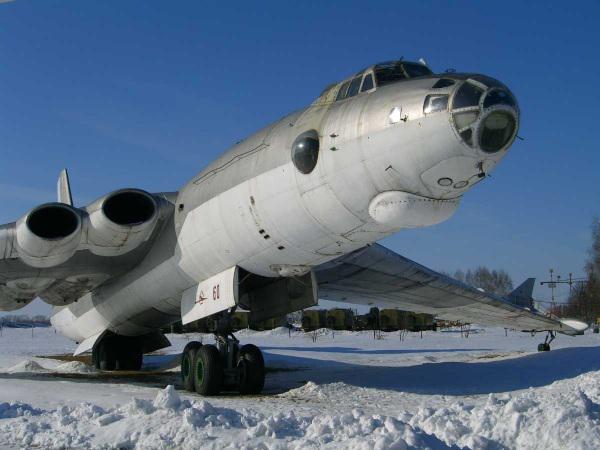
As a result of changes and improvements it was established airplane flight range is compared with earlier models has increased by 40% and exceeded 15 thousand. Km. The duration of the flight with one refueling is 20 hours, which made it possible to use the M-4 as an intercontinental strategic bomber. Another innovation - the new bomber could be used as a long range maritime torpedo.
The tactic of using M-4 provides flights of aircraft systems as part of the squadron or regiment at an altitude of 8-11 km. Approaching the target, aircraft violated the order and each bomber carried out an attack on its object. Thanks to the cannon armament bomber could effectively counter interceptor aircraft. Planes officially decommissioned in 1994.
M-4 BISON - strategic intercontinental jet bomber
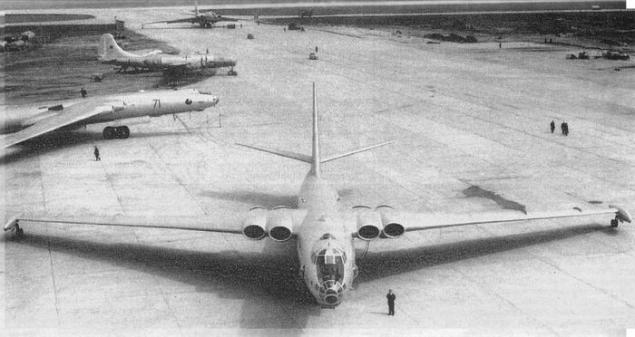
IL-28 - the first Soviet jet bomber
Design bomber Il-28 started with the tail. The fact is that the creation of this aircraft was made possible by the launch of mass production of reliable English turbojet with a centrifugal compressor "Nin", which was used a defensive mobile unit, which defined the basic layout features of IL-28.
IL-28 at the airfield. Photo: combataircraft.com
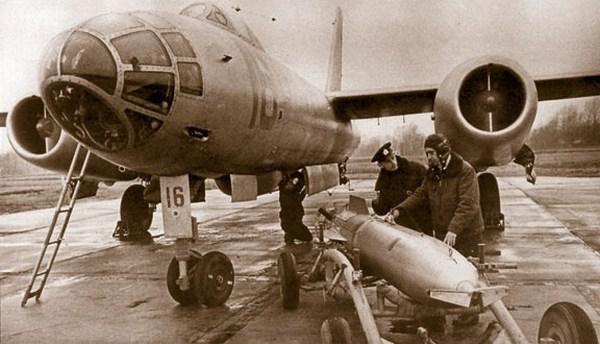
The main advantage of the aircraft was the fact that IL-28 has been steady over the entire speed range. It is easy to perform all maneuvers required for the bombers, executed turns with the bank up to 80 degrees. When the fighting spread to climb up to 2 km.
IL-28 in the sky. Photo: farm9.staticflickr.com
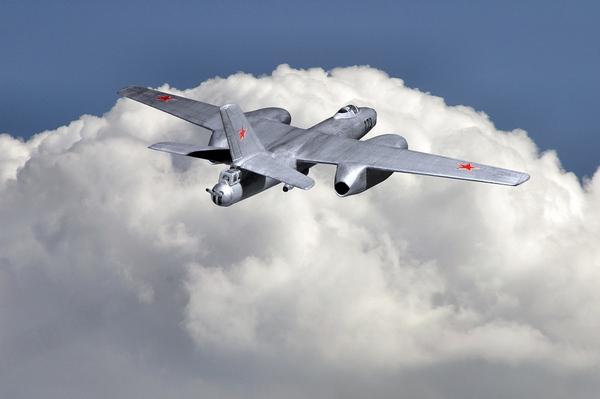
IL-28 was produced under license in China under the name H-5. The aircraft was operated extensively in more than 20 countries. All were released about 6 thousand. Units.
The view from the cockpit of IL-28. Photo: nnm.me

Su-34 - bomber generation 4+
Russian bombers became 4+ generation Su-34 bombers, designed for the application of high-precision strikes on surface and land targets at any time of the day. His design was completed in the early 1990s.
Bomber Su-34 generation 4+. Photo: blogspot.com

Some elements of the Su-34 made using Stealth. Thus, the plane reduced the degree of reflection of the radiation enemy radar with consistently good aerodynamics. Radio-absorbing materials and coatings made Su-34 less prominent on the radar screen than such aircraft as the Su-24, F-111 and F-15E. Another element of combat survivability of the Su-34 - the presence of the navigator-operator of the second control.
In the cockpit of the Su-34. Photo: www.baomoi.com

Sukhoi Su-34, according to experts, is many times greater than its predecessors. The plane, a combat radius of which exceeds 1,100 km, Service ceiling: 17000 m, can carry on board 12 tons of various weapons. Precision bombing is 5-7 meters. And experts say that the resource
The Su-34 has not yet expended.
Sukhoi Su-34. Photo: blogspot.com
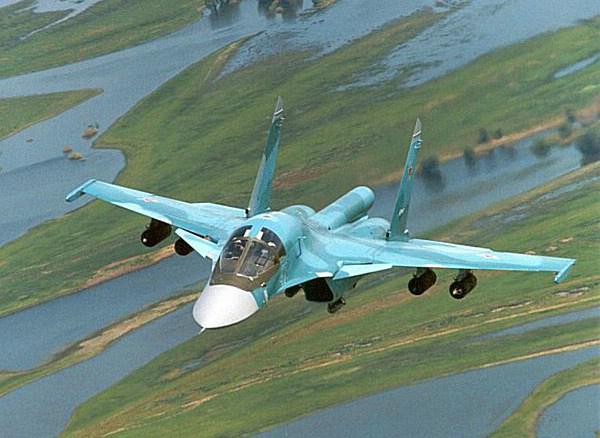
Tu-95 - the first Soviet intercontinental bomber
Tu-95 was the first Soviet intercontinental bomber and the last plane established on the instructions of Stalin. The first flight of the prototype Tu-95, created in OKB-156 under the direction of A. Tupolev, 12 November 1952, and series production began in 1955 and continues today.
Intercontinental bomber Tu-95 Photo: baomoi.com

Tu-95 is the world's only taken into service turboprop bomber, which is designed to engage cruise missiles important objects in the enemy's rear in all weather conditions and at any time. Total produced more than 500 cars.
Tu-95. Photo: airforceworld.com
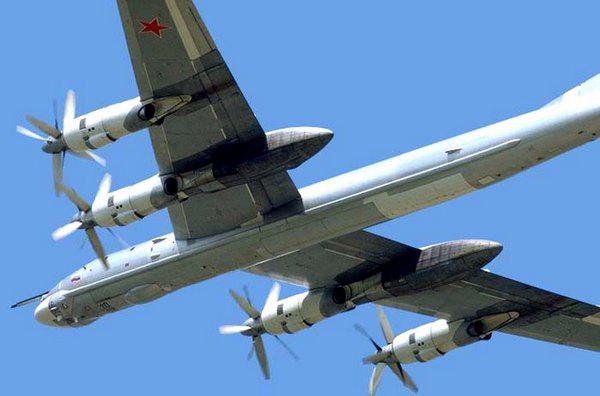
Source:
The top 10 production aircraft from Sukhoi
10 iconic in the history of military helicopters
Today I want to tell you about the 8 best bombers in aviation history of the USSR and Russia.
Russia became the birthplace of aircraft bombers because of the designer Igor Sikorsky, who in 1913 created the first aircraft of this type. In the Soviet Union it was also created, and the most massive in the world of the bomber. A January 20, 1953 its first flight made its first intercontinental jet bomber M-4 created VM Myasishev. Today review of aircraft-bombers, created by Russian designers.
Will be 24 photos + text source.

Ilya Muromets - the world's first bomber
The world's first bomber was founded in Russia in 1914, Igor Sikorsky and was named in honor of the epic hero. "Ilya Muromets" - the so-called various modifications of the aircraft, which were produced in Russia from 1913 to 1918. The main parts of the aircraft were made of wood. The lower and upper wings are assembled from separate parts and joined by connectors. Wingspan first bomber was 32 meters. Because in those years in the Russian aircraft engines are not made, then on the "Ilya Muromets" were installed motors «Argus» German production. Domestic motor P BV3 bomber set in 1915.
The bomber Ilya Muromets (1913). Photo: wright-brothers.org

"Ilya Muromets" was a 4-engine, and even stop the two engines could not get the plane to sit down. During the flight of an airplane wing people could walk, and it did not affect the balance of the aircraft. The yield on the wing during the test itself Sikorsky aircraft made to ensure that, if necessary, the pilot can repair the engine in the air.
The bomber Ilya Muromets created by designer Sikorski. Photo: dartzkombat.com

At the end of December 1914 Emperor Nicholas II approved a decree on the establishment of the Military Council "Squadron airships", which became the world's first connection bombers. For the first combat mission the aircraft of the Russian squadron flew on February 27, 1915. The first flight proved inconclusive because pilots got lost and could not find the target. The next day, the job was completed successfully: pilots dropped 5 bombs on the railway station, and dropped a bomb right in the middle of the rolling stock. Result flying bombers managed to capture on a photo. Besides bombs armed bomber "Ilya Muromets" was installed a machine gun? rapid-gun ship "Hotchkiss" caliber 37 mm. It attaches to the front of the site of artillery and was intended to combat the "Zeppelin". The bombs were placed inside the plane (vertically along the boards) and on the external sling. By 1916, aircraft bomb load increased to 500 kg, and to reset the bomb was constructed elektrosbrasyvatel
Cab bomber Ilya Muromets. Photo: ic.pics.livejournal.com

In total, during the First World Russian bombers flew 400 sorties, dropping 65 tons of bombs and destroying 12 enemy fighters. Military losses amounted to only one plane (which to attack 20 planes).
Ilya Muromets in the air. Photo: firetrench.com

TB-1 - the world's first heavy bomber
In the early 1920s among the Soviet samolёtostroiteley discussion focused on how to build something from the aircraft. Most of the opinion that the Soviet aircraft should be wood, then there were those who insisted that the Soviet Union should create all-metal aircraft. Among the latter was a young engineer Andrei Tupolev, who was able to insist on his own opinion.
Heavy bombers TB-1. Photo: wwiivehicles.com

TB-1, which, after much testing and development in 1931 still came down the assembly line, became the first domestic bomber-monoplane, the first Russian all-metal bomber and the first Soviet bomber designs will go into series production. It is with the TB-1 in the Soviet Union began the formation of strategic aviation. These machines scoured the sky for more than two decades.
It is on the TB-1 was tested many innovations that were later used in the aviation industry, in particular the system of "autopilot" radio system, ejection system, and so on. The plane could carry 1030 kg bomb load and small arms (three twin installation). The crew of the aircraft - 5-6 people.
TB-1 and its modifications has been established several world aviarekordov. So, on this bomber August 23, 1929 was committed first ever flight by plane from the Soviet Union to the United States. In 1934, TB-1 pilot AV Liapidevskii Chelyuskinites saved and brought out of the camp for all women and children. The bombers TB-1 consisted in service in the Soviet Union until 1936, and some - before the Great Otechestvennoy.Vsego was built 212 aircraft of this type.
Bomber TB-1 - winged pride of Russia. Photo: yakutskhistory.net

Pe-2 - the most massive bomber
In 1938 the famous Tupolev Design Bureau began development of a dive bomber Pe-2, which later became the most massive Soviet bombers during World War II.
Pe-2 was a very compact all-metal construction and had a good aerodynamic shape. On the bomber was established 2 motor M-105R Liquid Cooling 1,100 hp, which allow the aircraft to reach speeds up to 452 km \ h (only at 30 km / h less than the fighter Me 109E-standing armed with the fascist army ).
Pe-2 in the sky. Photo: photobucket.com

In 1940 he was released two serial bomber, and in early 1941, has descended from the conveyor 258 Pe-2 bombers. May 1, 1941 the new bomber, who was the 95th Regiment Colonel Pestova, flying during the parade on Red Square. Pe-2 took part in the fighting in the very first days of the war. By 1943, the bombers Pe-2 ranks first in the number of bombers. Due to the high precision bombing, they were a very effective weapon. Known fact that the pilots of the 3rd Air Corps bomber July 16, 1943 on its 115 aircraft destroyed 229 vehicles, 55 tanks, 12 machine-gun and mortar outlets, 11 anti-aircraft guns and field 3, 7, fuel depots and ammunition.
Legendary Soviet bomber Pe-2. Photo: airliners.net

And although in 1944 began to come to the front of the Tu-2, which are the main parameters exceeded the Pe-2 "pawn" to end the war remained a major Soviet bombers and at the "maize" became a legend of Soviet aviation.
The cabin Pe-2. Photo: englishrussia.com

Tu-4 - the first Soviet strategic bomber
At the beginning of 1945 at the Far Eastern Soviet airfields happened to be 4 American aircraft the B-29 that participated in the bombardment of Japan and the occupied territories. When the Communist Party and the Soviet government gave the designers the task of creating a modern long-range bomber, a professor at the Moscow Aviation Institute and the aircraft Vladimir Myasischev offered to copy the American bombers, but to establish a new aircraft Russian engine AL-72 and US machine guns replaced by guns B-20.
Tu-4 - the first Soviet strategic bomber. Photo: wordpress.com

Tu-4, flight tests which were held in 1947 - an all-metal cantilever monoplane. The length of the bomber was 30, 8 meters, wingspan - 43, 05 meters. Four motor AL-73TK capacity of 2400 liters. from. allowed the aircraft to accelerate to 558 km / h at an altitude of 10 km. The maximum bomb load - 8 tons. The efficiency of the aircraft has improved through the use of automation. For example, the onboard radar with autopilot allowed to find the target and hit them even at night.
Tu-4 clone of a B-29 Photo: livejournal.com

Tu-4 became the first Soviet nuclear weapons carrier when in 1951 the USSR was formed bomber regiment, armed with atomic bombs. In 1956, during the Hungarian uprising made a regiment of departure in the bombing of Budapest, which at the last moment was interrupted by order of the Soviet command.
There were built 847 aircraft, 25 of which have transferred to China.
The cabin Tu-4. Photo: news.xinhuanet.com

M-4 BISON - strategic intercontinental jet bomber
In the late 1940s, with the advent of nuclear weapons it has become necessary in the means of delivery. Bombers were needed that surpasses the existing technical characteristics of the approximately 2-fold. The first to develop the concept of the aircraft started the Americans. So there were the B-60 and B-52, which took off in the spring of 1953. In the USSR work on a bomber of this class were developed with a significant delay. Stalin ordered the development of the aircraft professor of Moscow Aviation Institute V.Myasischevu who filed into the government science-based proposal for the establishment of strategic aircraft with a range of 11,000 - 12,000 km, but the deadlines were very tight deadlines of the project. By December 1952 prototype aircraft was built, and in January 1953, M-4 bomber - eight-cantilever-metal midwing equipped with 4 engines and retractable landing gear bicycle type - made its first flight.
M-4 BISON - strategic intercontinental jet bomber

As a result of changes and improvements it was established airplane flight range is compared with earlier models has increased by 40% and exceeded 15 thousand. Km. The duration of the flight with one refueling is 20 hours, which made it possible to use the M-4 as an intercontinental strategic bomber. Another innovation - the new bomber could be used as a long range maritime torpedo.
The tactic of using M-4 provides flights of aircraft systems as part of the squadron or regiment at an altitude of 8-11 km. Approaching the target, aircraft violated the order and each bomber carried out an attack on its object. Thanks to the cannon armament bomber could effectively counter interceptor aircraft. Planes officially decommissioned in 1994.
M-4 BISON - strategic intercontinental jet bomber

IL-28 - the first Soviet jet bomber
Design bomber Il-28 started with the tail. The fact is that the creation of this aircraft was made possible by the launch of mass production of reliable English turbojet with a centrifugal compressor "Nin", which was used a defensive mobile unit, which defined the basic layout features of IL-28.
IL-28 at the airfield. Photo: combataircraft.com

The main advantage of the aircraft was the fact that IL-28 has been steady over the entire speed range. It is easy to perform all maneuvers required for the bombers, executed turns with the bank up to 80 degrees. When the fighting spread to climb up to 2 km.
IL-28 in the sky. Photo: farm9.staticflickr.com

IL-28 was produced under license in China under the name H-5. The aircraft was operated extensively in more than 20 countries. All were released about 6 thousand. Units.
The view from the cockpit of IL-28. Photo: nnm.me

Su-34 - bomber generation 4+
Russian bombers became 4+ generation Su-34 bombers, designed for the application of high-precision strikes on surface and land targets at any time of the day. His design was completed in the early 1990s.
Bomber Su-34 generation 4+. Photo: blogspot.com

Some elements of the Su-34 made using Stealth. Thus, the plane reduced the degree of reflection of the radiation enemy radar with consistently good aerodynamics. Radio-absorbing materials and coatings made Su-34 less prominent on the radar screen than such aircraft as the Su-24, F-111 and F-15E. Another element of combat survivability of the Su-34 - the presence of the navigator-operator of the second control.
In the cockpit of the Su-34. Photo: www.baomoi.com

Sukhoi Su-34, according to experts, is many times greater than its predecessors. The plane, a combat radius of which exceeds 1,100 km, Service ceiling: 17000 m, can carry on board 12 tons of various weapons. Precision bombing is 5-7 meters. And experts say that the resource
The Su-34 has not yet expended.
Sukhoi Su-34. Photo: blogspot.com

Tu-95 - the first Soviet intercontinental bomber
Tu-95 was the first Soviet intercontinental bomber and the last plane established on the instructions of Stalin. The first flight of the prototype Tu-95, created in OKB-156 under the direction of A. Tupolev, 12 November 1952, and series production began in 1955 and continues today.
Intercontinental bomber Tu-95 Photo: baomoi.com

Tu-95 is the world's only taken into service turboprop bomber, which is designed to engage cruise missiles important objects in the enemy's rear in all weather conditions and at any time. Total produced more than 500 cars.
Tu-95. Photo: airforceworld.com

Source:




